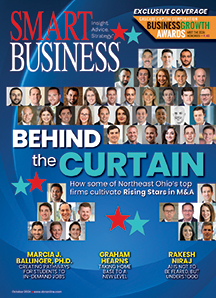

Running a large educational institution poses a unique set of challenges. From the duty of care requirement, to campus safety, to bedbugs in the dorms, school administrators have to keep track of a lot more than just the average student’s GPA.
“One of the issues regarding colleges and universities is they are very complicated organizations,” says Anne Mulholland, director of Aon Risk Solutions’ Higher Education Alliance. “They tend to be very focused on institutional responsibility. Most complex entities tend to be that way because there are so many aspects to control.”
Smart Business spoke with Mulholland; Angela Tennis, COO of Aon’s Higher Education Alliance; and Mary Walkenhorst, senior account executive, Aon Risk Solutions, about how new solutions available to administrators are improving safety for colleges and universities.
Why are educational institutions particularly susceptible to risk?
Schools have a lot to consider. There are now students coming to school with mental or developmental issues who never would have been able to attend school in the past, but now can because of new medications.
Alcohol is still a huge issue in educational institutions. Some schools have nuclear labs, 100,000 seat arenas, or students traveling abroad, and each of those areas pose different risks.
What types of risks should concern those involved in higher education?
Student safety is a risk that everyone needs to be aware of. Consider the past 12 months, with man-made disasters such as the spring uprising in the Middle East, or the Japan earthquake and tsunami, and the resulting potential nuclear disaster.
When parents send their child to school, they trust that the college or university will meet its duty of care and take care of that student. They expect that if their child travels abroad that the college will have thought of any contingencies that may come up. Schools often turn to risk management companies to help answer that duty of care.
When you have a mass loss, like a campus shooting, it can hang over the institution for a long time, and not just from a legal standpoint but from a cultural standpoint. It’s a malaise that’s hard to shake for years, and it carries a reputational risk, as well. Schools have done a lot of work to help make their campuses safer and more capable of being locked down.
Also, products such as Aon WorldAware can help keep people safe when they travel internationally. The program is an online country information service that tracks not only students but faculty and administration as they travel abroad. It is a coordination of whatever insurance the school has combined with the resources of the program.
The system does pretrip planning and training regarding culture, safety, political environment and recommended security procedures. WorldAware responds to both small issues, like a lost passport, and large issues, such as medical evacuation.
What are some other higher education risk issues?
Another issue is bedbugs. They can be a major headache for anyone in the hospitality industry, but specifically in dormitories. Typically, there is a heat process to remove them, or sometimes you’re just told to burn all your clothes.
Aon has developed a joint initiative with the leading pest control provider, which uses a methodology that freezes the affected area and reduces property damage. It also reduces the time necessary for rooms to be out of commission. A major residence hall infestation can cause the residence hall to be unavailable for months, creating quite a juggling act for the university.
How can administrators facing these risks manage them?
Enterprise risk management is a way for them to think of their risk, because it is a less silo-focused approach. It has the benefit of trying to capture all the risks the university faces in one overall analysis. One of the biggest questions is, ‘How do we know what we don’t know? How do we know what’s on the horizon?’
ERM is a good paradigm for organizations to use to interpret their current risk profile and what new risks may be coming at them. Then they can build a business plan to avoid it, mitigate it or deal with it.
Can other types of organizations use this approach to risk?
It is a framework that is useful not just for colleges and universities but for any complex organization. There is no one-size-fits-all approach to ERM.
ERM is not an insurance product; it’s a way of thinking about risk. It’s a major way to look at risks with a comprehensive focus.
Your risk management partner can help develop strategies to avoid the perception of ERM being an add-on, or something a consultant dreamed up. To work properly, it has to come from the culture itself, so it has the best chance of being successful. The analysis and implementation strategy have to fit the organization’s culture, or it’s just not going to work.
Anne Mulholland is director of Aon Risk Solutions’ Higher Education Alliance. Reach her at [email protected]. Angela Tennis is COO of Aon Risk Solutions’ Higher Education Alliance. Reach her at [email protected]. Mary Walkenhorst is senior account executive, Aon Risk Solutions. Reach her at (314) 854-0702 or [email protected].

